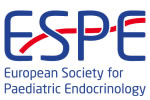hrp0097p1-177 | Sex Differentiation, Gonads and Gynaecology, and Sex Endocrinology | ESPE2023
The consistency between Assigned Gender and Individual Gender Identity in Disorder of Sex Development Cases: Long-Term Results from a Single Center
Jalilova Arzu , Özen Samim , Yuluğ Taş Begüm , Kızılay Özalp Deniz , Ece Solmaz Aslı , Gül Balkı Hanife , Tekin Ali , Arslan Emrullah , Atik Tahir , Gülpınar Kübra , Çoğulu Özgür , Ünal Kocabaş Gökçen , Özbaran Burcu , Onay Hüseyin , Ulman İbrahim , Özkınay Ferda , Saygılı Füsun , Gökşen Damla , Darcan Şükran
hrp0084fc3.4 | Diabetes | ESPE2015
Wolfram Syndrome: Natural History and Genotype–Phenotype Correlation Based on EURO-WABB Registry Show Gender Differences in Disease Severity
Dias Renuka , Richens Caitlin , Astuti Dewi , Nightingale Peter , Ayme Segolene , Heredia Miguel Lopez de , Nunes Virginia , Maffei Pietro , McCafferty Susan , Młynarski Wojciech , Parkinson Kay , Paquis-Flucklinger Veronique , Rohayem Julia , Sinnott Richard , Tillmann Vallo , Tranebjaerg Lisbeth , Barrett Timothy
hrp0092s10.3 | Brain development and sex: Is it Chromosomes or Hormones? | ESPE2019
How Hormones Impact on Emotion and Cognition – New Insights From Magnetic Resonance Imaging
hrp0092ern1.1 | (1) | ESPE2019
Life Long Management of Childhood Craniopharyngioma
hrp0094p1-43 | Sex Endocrinology and Gonads A | ESPE2021
Broad range of phenotypes in an international cohort of 75 DSD individuals with SF-1/NR5A1 variants
Kouri Chrysanthi , Sommer Grit , Ahmed Faisal , Balsamo Antonio , Baronio Federico , Bryce Jillian , Camats Nuria , Cetinkaya Semra , van der Grinten Hedi L Claahsen , Cools Martine , Darendeliler Fatma Feyza , Davies Justin H , Fabbri-Scallet Helena , Globa Evgenia , Guerra-Junior Gil , Guran Tulay , Hannema Sabine , Hiort Olaf , Janner Marco , Kalinchenko Natalia , Lachlan Katherine , Kolesinska Zofia , l’Allemand Dagmar , Lang-Muritano Mariarosaria , Lucas-Herald Angela , Martin Idoia Martinez de Lapiscina , Mazen Inas , Moenig Isabel , Muhrer Julia , Niedziela Marek , Nordenstrom Anna , Orman Burce , Poyrazoglu Sukran , Tack Lloyd , Tadokoro-Cuccaro Rieko , Wasniewska Malgorzata , Yavas Zehra , Zelinska Nataliya , Fluck Christa E ,
hrp0086p1-p112 | Bone & Mineral Metabolism P1 | ESPE2016
Bone Health and Body Composition in Childhood Onset Growth Hormone Deficiency at Time of Initial Evaluation and Retesting
Ahmid M , Shepherd S , McMillan M , Ahmed S F , Shaikh M G
hrp0082p2-d3-617 | Turner Syndrome | ESPE2014
Early Occurrence of Gonadoblastoma Found at Elective Gonadectomy in Turner Syndrome Mosaic for Y Chromosome
MacMahon J , Morrissey R , McDermott M , O'Sullivan M , Quinn F , Green A , Lynch S A , O'Connell S M
hrp0082p3-d1-632 | Adrenals & HP Axis | ESPE2014
Secondary Pseudohypoaldosteronism Type 1: the Role of a Urinary Steroid Profile
Grace M L , Murray D M , Joyce C , Taylor N F , Ghataore L , O'Connell S M
hrp0082p3-d3-748 | Diabetes (4) | ESPE2014
Monogenic Diabetes in a Paediatric Population: Finding the Needle in the Haystack
Mavinkurve M , Johnston N , Carroll A , Donnell C Mc , Byrne M M , Murphy N P
hrp0094fc8.3 | Neuroendocrinology | ESPE2021
A novel clinical risk score that can accurately predict recurrence of craniopharyngioma - a multicentre cohort study
Kyprianou Nikolina , Blackburn James , Tan Rachael , Bulfamante Gaetano , Massa Valentina , Roncaroli Federico , Ribalta Teresa , Evanson Jane , Korbonits Marta , Dattani Mehul , Rai Ashutosh , Gupta Prakamya , Dutta Pinaki , Bhansali Anil , Salunke Pravin , Pani Danda , Skoric Tanja , Kastelan Darko , Gnanalingham Kanna , Mitchell Rod , Bulfamante Antonio , Argente Jesus , Goycoolea Nicolas , Torales Jorge , Biagetti Betina , Audi Laura , Resmini Eugenia , Webb Susan , Kapoor Ritika , Chandler Christopher , Zebian Bassel , Thomas Nick , Sampron Nicolas , Paraskevopoulos Dimitrios , Preda Cristina , Ahmad Amar , Pease Gevers Evelien F , Gaston-Massuet Carles ,



